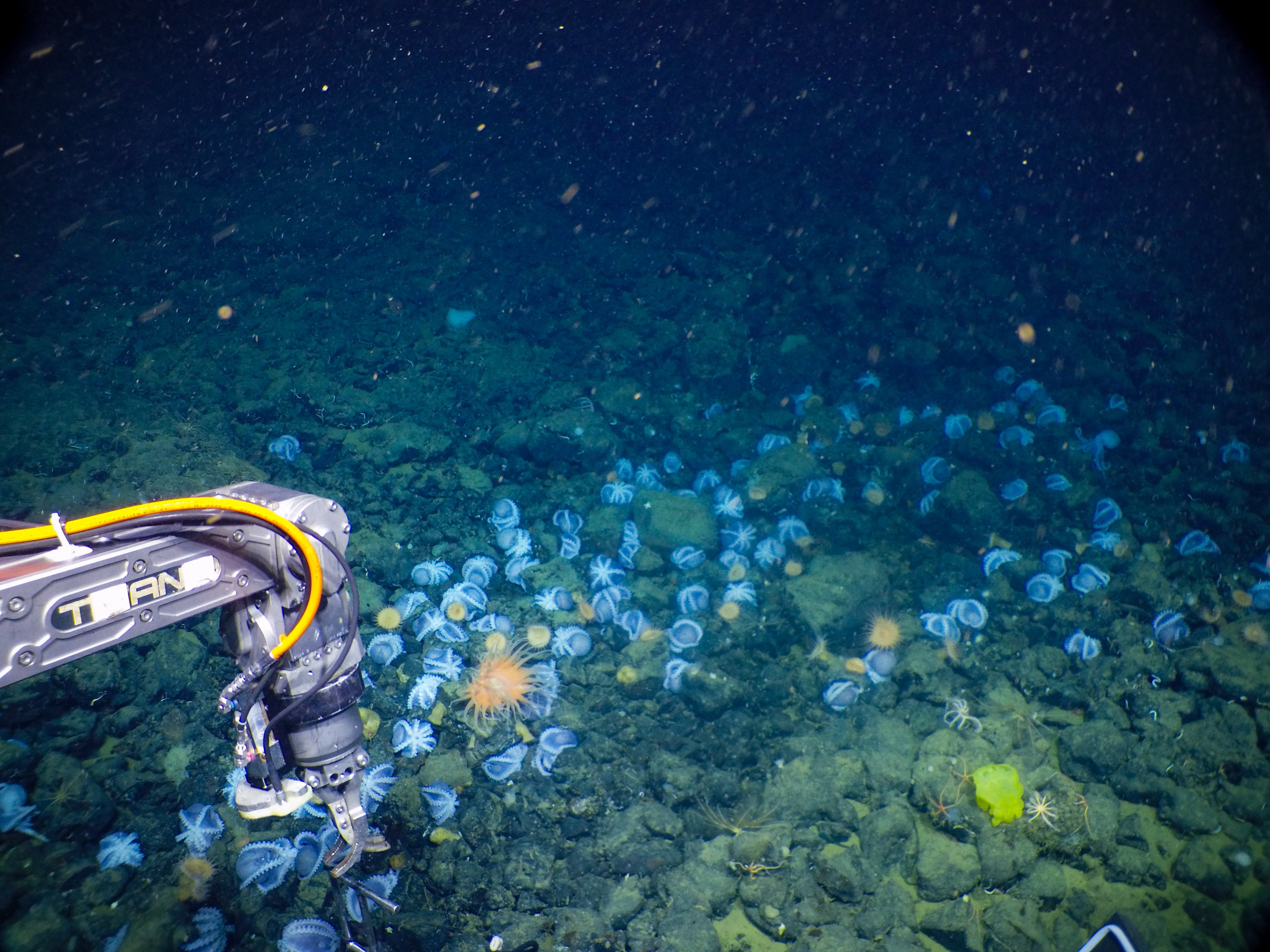GSO’s Inner Space Center collaborates with BBC to bring “Blue Planet” to life.
In late March, 2019, the Inner Space Center (ISC) provided telepresence and live video production support for the British Broadcasting Corporation’s (BBC) “Blue Planet Live.” The week-long television series that followed up on the award-winning series “Blue Planet II” celebrates marine life around the globe to explore the health of our oceans. ISC staff Alex DeCiccio, Rachel Simon and I all worked closely with the Woods Hole Oceanographic Institution (WHOI) as part of the research and live video broadcasting expedition onboard the R/V Atlantis.
Back in October 2018, I was expedition leader onboard the E/V Nautilus, conducting ROV (remotely operated vehicle) dives in NOAA’s Monterey Bay National Marine Sanctuary. During the first dive of the expedition, to survey along an unexplored deep region in the new part of the Sanctuary southeast of Davidson Seamount, we encountered an expansive region where thousands of brooding octopuses were found within small fractures in the seafloor along a steep and craggy knoll. Shimmering water indicative of warm venting fluid associated with low temperature hydrothermal circulation was observed along the fracture occupied by the brooding octopuses. I knew that the BBC was interested in filming with the human-occupied submersible Alvin a few months later for “Blue Planet Live,” but they had not yet identified a location for dives near San Francisco Bay. Given that these deep-sea octopus (Muusoctopus robustus) brood their eggs for more than a year, I immediately reached out to my contacts at BBC and WHOI to suggest this region be their filming location for the broadcasts. Indeed, they agreed.
ISC then coordinated, planned and executed all telepresence and production work onboard R/V Atlantis with WHOI and BBC. Having worked onboard Atlantis a few times in the past to support different telepresence-enabled missions, including the investigation of the tragic El Faro shipwreck (a container ship that sank with all hands lost south of the Bahamas during Hurricane Joaquin in 2017), we were able to organize the technical details for supporting the satellite bandwidth required for the expedition. This established a robust connection between the ship, ISC, and BBC’s London studios—a requirement for live television broadcasting.
We steamed out of downtown San Francisco and spent about five days at sea supporting the Alvin dives to both the “octopus garden” and Davidson Seamount, managing the satellite network connectivity and conducting several live technical rehearsals with Andy Bowen, director of WHOI’s National Deep Submergence Facility, as the onboard host. During one of the Alvin dives, the scientist and pilots in the submersible observed the actual hatching of live baby octopus from the site we discovered a few months previously.
The project was a resounding success, and we hope to work with BBC on similar projects in the future. Our work on “Blue Planet Live” has set the stage for how to conduct high bandwidth live television broadcasts from sea—an exciting new frontier for telepresence technology.
The author, Dwight Coleman, is Director of GSO’s Inner Space Center.




